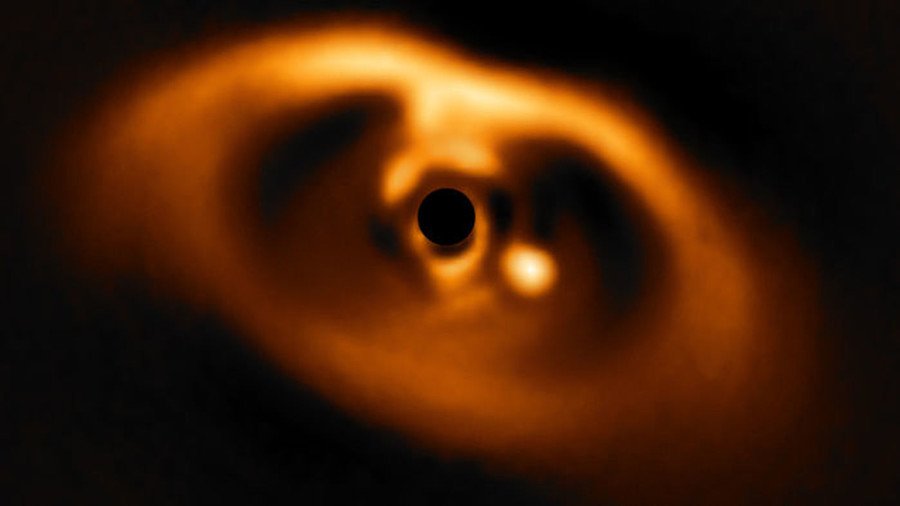Astronomers capture first-ever image of a newborn planet (VIDEO)

Astronomers have captured the first ever confirmed image of a newborn planet forming around a young dwarf star – an ambitious task that has previously proved elusive to scientists.
The planet was caught in the act of formation amid a disk of gas and dust surrounding a young dwarf star, known as PDS 70.
The stunning snapshot, considered the first robust detection of a young planet, was captured by the SPHERE instrument on the ESO's’ Very Large Telescope and stands out clearly as a bright point to the right of the blackened center of the image.
The unique photo was made possible thanks to the use of a filter, known as a coronagraph, which blocks the light from the central star and allows the detection of the much fainter disc and planetary companion, the ESO explained.
"These discs around young stars are the birthplaces of planets, but so far only a handful of observations have detected hints of baby planets in them," Miriam Keppler, lead researcher from the Max Planck Institute for Astronomy, said.
The emerging planet is a gas giant with a mass greater than Jupiter, located some 3 billion km from the central star – roughly equivalent to the distance between Uranus and the Sun. Data also suggests the planet’s atmosphere is cloudy and has a surface temperature of 1000C, making it much hotter than any planet in our own Solar System.
“After more than a decade of enormous efforts to build this high-tech machine, now SPHERE enables us to reap the harvest with the discovery of baby planets!” Thomas Henning, director at the Max Planck Institute for Astronomy said.
The research has been presented in two papers, which will be published in the journal Astronomy and Astrophysics. It builds on previous research from 2015 where a number of newborn planets were observed evolving for the first time.
Scientists hope the detection will offer greater insight into the early stages of planetary evolution and enhance their overall understanding of alien worlds













